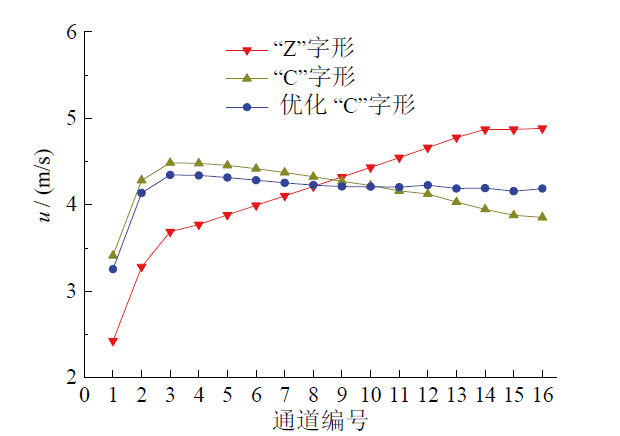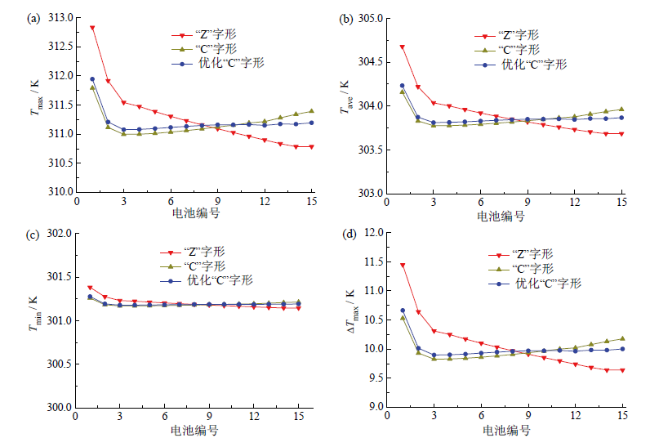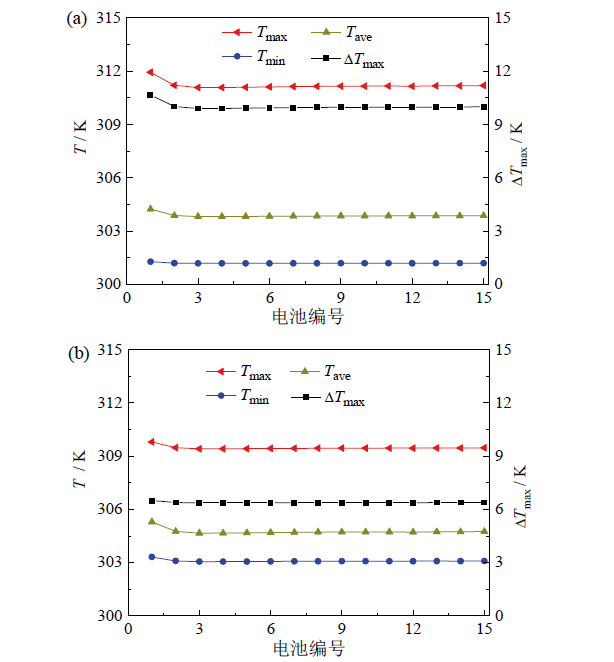0 引言
1 建立模型
1.1 空气阻力网络模型
Fig. 1 (a) Structure schematic of the battery module; (b) flowing resistance network model of air图1 (a)电池模组结构示意图;(b)空气流动阻力网络模型 |
1.2 热力学模型
2 结果与讨论
2.1 空气流动阻力网格模型优化结构与对比验证
Fig. 2 Structure schematic of the models: (a) “Z” shape; (b) flat “C” shape; (c) optimized “C” shape图2 模组结构示意图:(a)“Z”字形结构;(b)“C”字形结构;(c)优化的“C”字形结构 |
Fig. 3 Velocity in different path of the battery module图3 电池模组中不同间隙通道的流速 |
2.2 不同结构电池模组的流场
2.3 不同结构电池模组温度场分布
Fig. 4 The maximum temperature Tmax (a), average temperature Tave (b), minimum temperature Tmin (c) and maximum temperature difference ΔTmax (d) of each battery in the module图4 电池模组内各电池单体的最高温度Tmax(a)、平均温度Tave(b)、最低温度Tmin(c)和最大温差ΔTmax(d) |
2.4 空气流动方向对冷却效果的影响
Fig. 5 Cooling of battery module with different air flow direction图5 不同空气流动方向时模组内各电池单体的冷却效果:(a)空气下进上出(方案A);(b)空气上进下出(方案B) |








